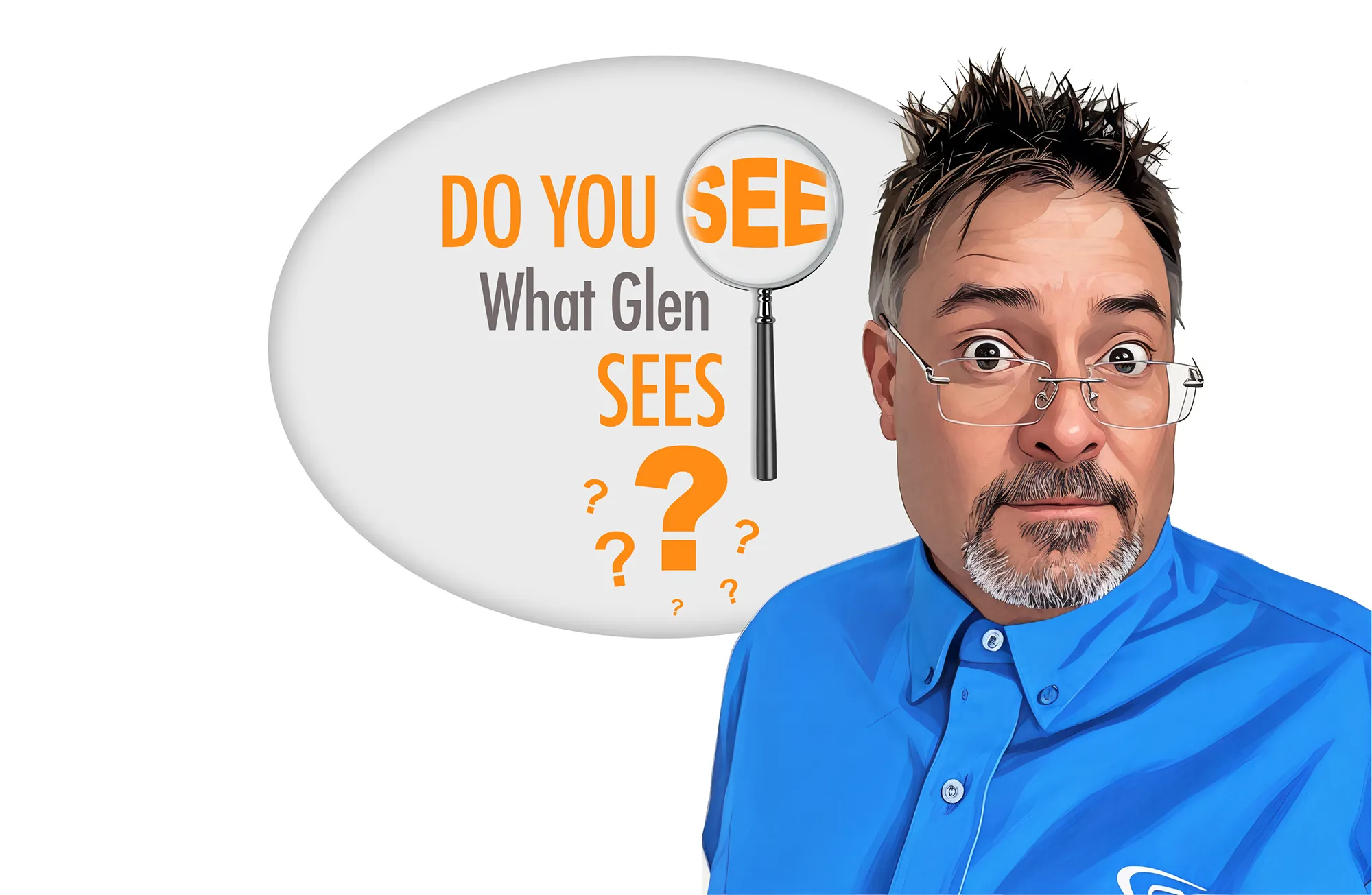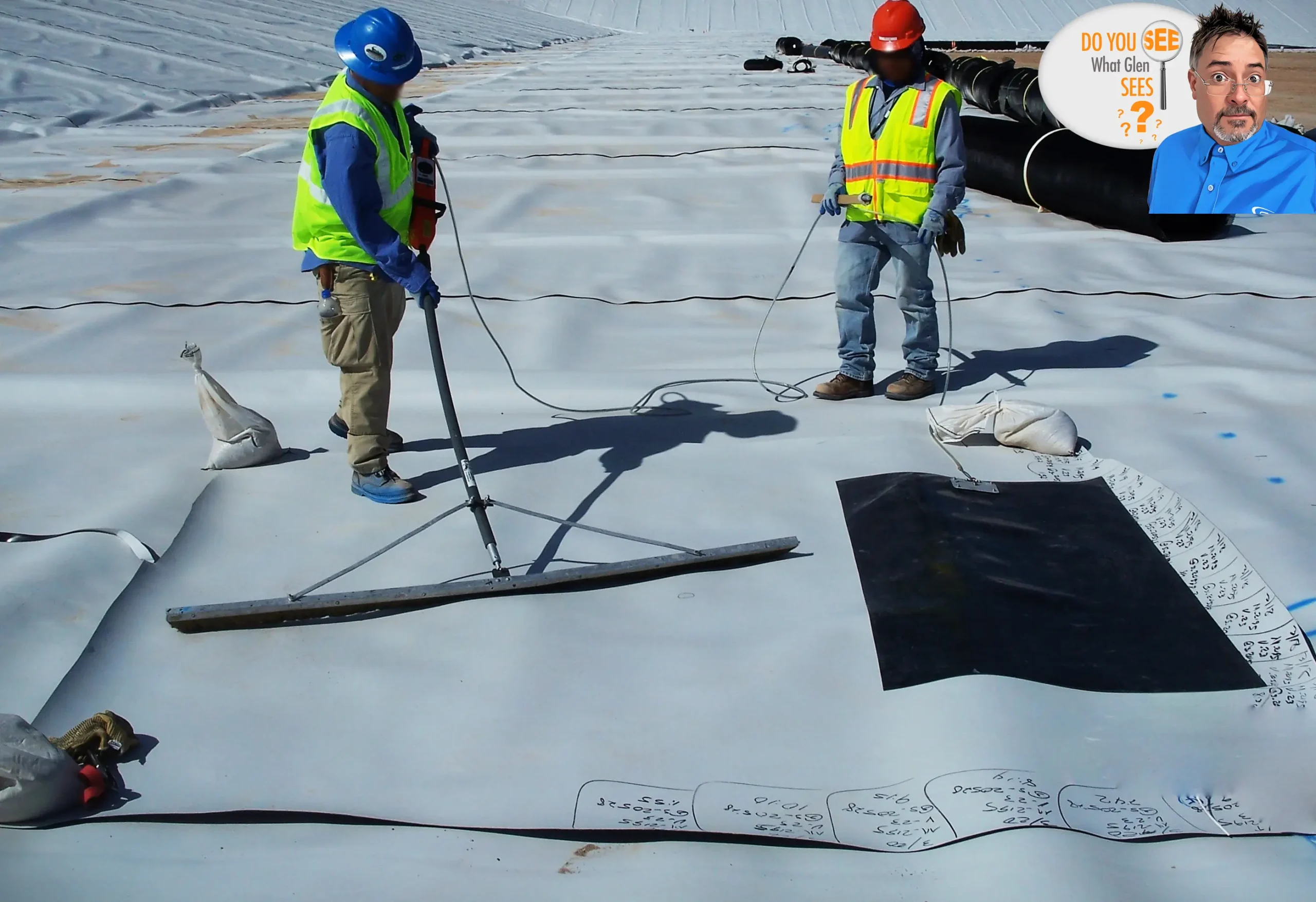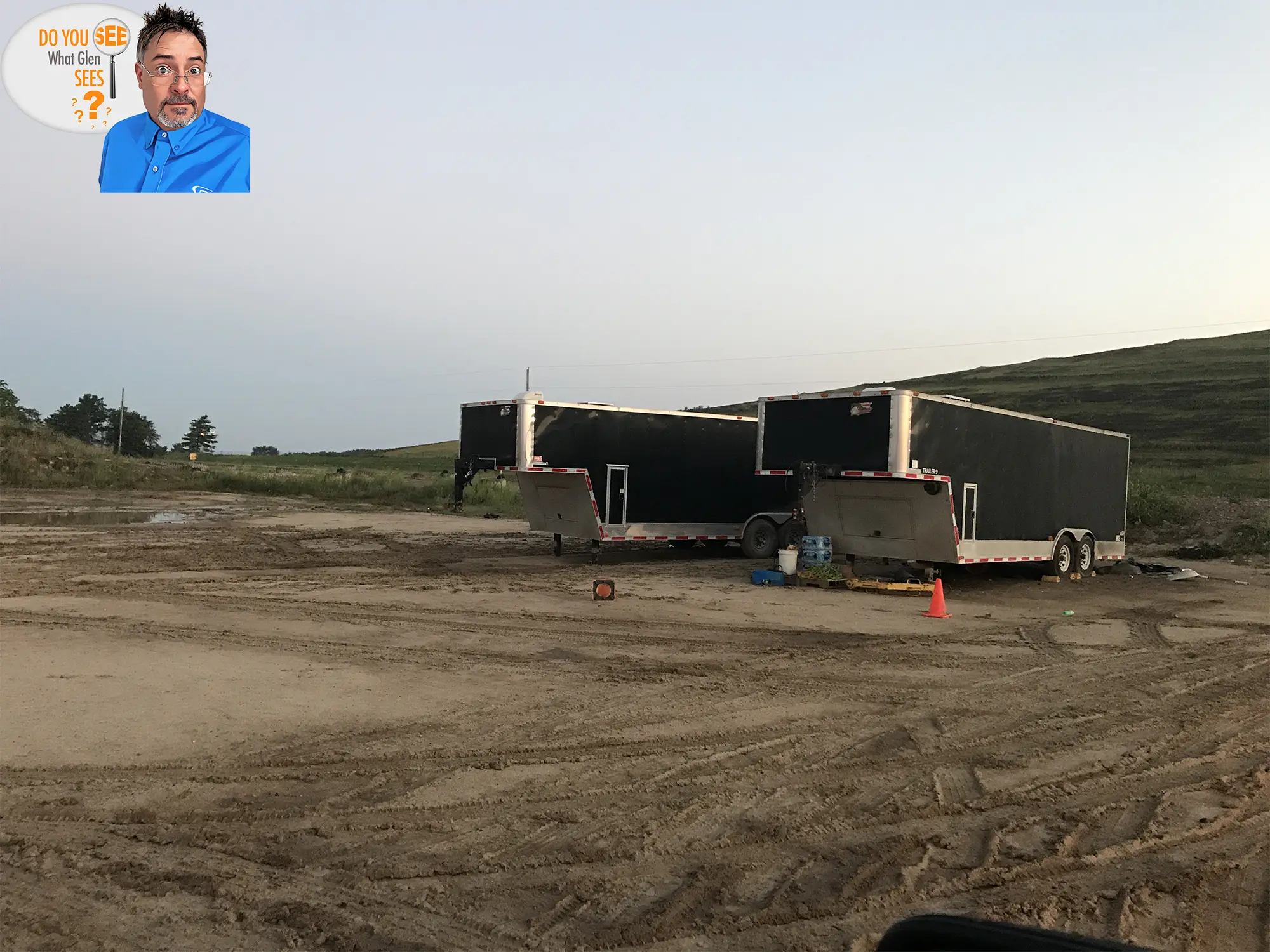First, the answer to Vol. 31 (last week).
The primary reason I chose this photograph was for the bare geomembrane spark test trial weld being performed. The geomembrane is a conductive backed material and the bare geomembrane leak location testing followed ASTM D7240.
The lesson learned here that I wanted to share is that the liner crew would perform the trial test locating a pinhole on the same scrap piece for weeks at a time (multiple trials per day), without moving the trial piece. Ultimately, this caused a burn in the underlying geomembrane, which then needed to be repaired. Hence, even if only one trial is performed, you should check the underlying geomembrane (when applicable) for damage.
You can also see the dirt in the background on the geomembrane. The geomembrane needs to be clean and dry when doing this test and any obstacles such as sandbags, scraps, cords, etc. need to be removed prior to testing.
Someone also mentioned the wrinkles. Indeed, they were problematic on this project with the large wand. Maintaining contact on wrinkles was difficult especially where multiple wrinkles converge. CQA often had to slow the installer down to avoid “hopping” the wand over the backside of wrinkles and to get them to walk out or repair converging wrinkles so that the entire geomembrane surface (other than seam overlap areas) could be tested.
• Another thing that needed to be monitored with wrinkles with this test method is that there is constant contact with the grounding pad/coupler to the geomembrane during testing. Just like the wand, the grounding pad/coupler can “hop” wrinkles at which time the area being tested by the wand will not identify a leak.
From a safety standpoint, someone mentioned the high-voltage cord being held by the second person. The second person is holding the ground lead which attaches to the grounding pad. It still requires caution and inspection of the cable and avoiding contact with the grounding pad itself while the current is present. As an operational note, this device (circa 2010) was extremely sensitive to tension on the cord and seemed to require a second person to ensure the device always worked properly.
Another safety issue is the lack of ballast on the corners of the trial pad. We frequently experienced high winds on this site (occasional haboobs, which have been in the news lately) and the lack of ballast makes this a potential airborne hazard.
One last note – you can see the rolls of material in the background and the dirt. The rolls were typically staged when the geomembrane was clean. However, dirt often accumulated below the rolls and if the rolls were rotated at all with that dirt below them, severe scratching of the underlying geomembrane occurred, requiring a patch/cap repair. To avoid damage, rolls had to be lifted straight up with someone holding the edge to keep them from rotating.






